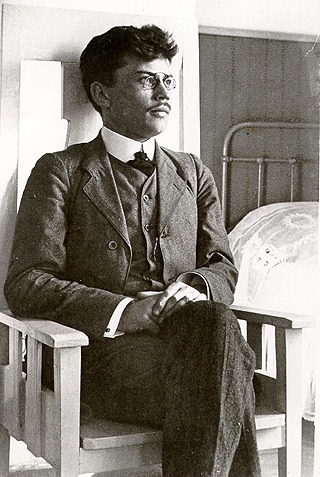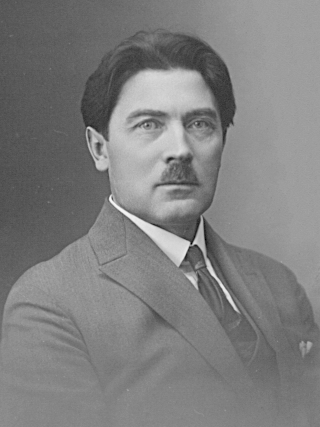|
Uus Eesti
''Uus Eesti'' was a daily newspaper published in Estonia from September 1935 until the Soviet occupation of Estonia in June 1940. The newspaper was politically aligned with the then Estonian government. History The paper was established in September 1935, as the successor to the paper ''Kaja''. Columnists and regular contributors of Uus Eesti included Johannes Aavik, Paul Öpik, Friedebert Tuglas, Aleksander Tõnisson, Marie Under, August Gailit, Paul Kogerman, Mait Metsanurk, Henrik Visnapuu, and others. In 1937, the National Archives of Estonia made an agreement with ''Uus Eesti'' photographer A. Kalm to share one photograph of each major public event in Estonia, as part of a larger project to preserve photographs from national newspapers. The Soviets shut the paper down on 21 June 1940. The pro-soviet, socialist paper ''Rahva Hääl ''Rahva Hääl'' (lit. ''The People's Voice'') was the official daily newspaper of the Communist Party of Estonia during Soviet occupation ... [...More Info...] [...Related Items...] OR: [Wikipedia] [Google] [Baidu] |
Uus Eesti
''Uus Eesti'' was a daily newspaper published in Estonia from September 1935 until the Soviet occupation of Estonia in June 1940. The newspaper was politically aligned with the then Estonian government. History The paper was established in September 1935, as the successor to the paper ''Kaja''. Columnists and regular contributors of Uus Eesti included Johannes Aavik, Paul Öpik, Friedebert Tuglas, Aleksander Tõnisson, Marie Under, August Gailit, Paul Kogerman, Mait Metsanurk, Henrik Visnapuu, and others. In 1937, the National Archives of Estonia made an agreement with ''Uus Eesti'' photographer A. Kalm to share one photograph of each major public event in Estonia, as part of a larger project to preserve photographs from national newspapers. The Soviets shut the paper down on 21 June 1940. The pro-soviet, socialist paper ''Rahva Hääl ''Rahva Hääl'' (lit. ''The People's Voice'') was the official daily newspaper of the Communist Party of Estonia during Soviet occupation ... [...More Info...] [...Related Items...] OR: [Wikipedia] [Google] [Baidu] |
Aleksander Tõnisson
Aleksander Tõnisson VR I/1 (17 April 1875 – 30 June 1941) was an Estonian military commander (Major General) during the Estonian War of Independence. In 1899 he graduated from Vilnius Military Academy. Tõnisson participated in Russo-Japanese war and in World War I. In 1917 he participated in formation of Estonian national units and as commander of 1st Estonian regiment participated in battles at Riga front. In 1918 he escaped from German occupation to Finland, returned in autumn and became commander of 1st Division of Estonia. During Estonian Liberation War Tõnisson fought successfully at Viru Front. After war he served twice as minister of defence, in 1934 he retired from military and was mayor of Tartu 1934–1939 and Lord Mayor (''ülemlinnapea'') of Tallinn from 1939–1940. In 1940 Soviet occupation authorities arrested Tõnisson and executed him the following year. Honours and awards * Order of St. Vladimir, 4th class; for distinguished service * Cross of Liberty, ... [...More Info...] [...Related Items...] OR: [Wikipedia] [Google] [Baidu] |
National Archives Of Estonia
The National Archives of Estonia (NAE, et, Rahvusarhiiv) has been the centre of archival administration in Estonia since 1999. Organization NAE collects and preserves records documenting the history, culture, nationhood and social conditions in Estonia independent of the time or place of creation, or character of data medium. NAE is a government agency within the domain of the Ministry of Education and Research. It includes collection, preservation and access departments in Tallinn and in Tartu, regional departments in Rakvere and in Valga, as well as the film and digital archives. Development of research is covered by the research and publishing bureau, the support services function with the help of the administrative bureau. The cornerstone of the new main building of NAE was laid in the spring of 2015 and was publicly opened in 2017. The new site covers 13,599 m2, the building has 6 floors, with a total floor area of 10,708 m2 and a volume of 50,000 m³. The repository s ... [...More Info...] [...Related Items...] OR: [Wikipedia] [Google] [Baidu] |
Henrik Visnapuu
Henrik Visnapuu ( – 3 April 1951) was a well-known Estonian poet and dramatist. Life Henrik Visnapuu was born in Helme Parish, Viljandi County, Livonia. He first attended the village school in Reola (today in Ülenurme Parish) and college in Sipe (today in Kambja Parish) and the municipal school in Tartu. In 1907, he graduated from the grammar school in Narva after taking final exams in education and taught at various schools as a primary school teacher. By 1912 he moved to Tartu and taught Estonian literature at the local high school for girls. At the same time he attended lectures in philosophy at the University of Tartu. Visnapuu worked since 1917 as a journalist at the Tallinna Teataja, then until 1935 he worked as a freelance journalist and author. From 1935 to 1944 he was culture secretary in the department of the Information Agency of the Estonian state. With the approaching Soviet occupation of Estonia and the return of the Red Army, Henrik Visnapuu fled to Germany i ... [...More Info...] [...Related Items...] OR: [Wikipedia] [Google] [Baidu] |
Mait Metsanurk
Mait Metsanurk (born Eduard Hubel, 19 November 1879 – 21 August 1957) was an Estonian writer who led the neo-realist school of Estonian literature. Early years Mait Metsanurk was born as the youngest of eight children in a peasant family in Saare farmstead, Metsanuka (now Tartu Parish), in the Kreis Dorpat of the Governorate of Livonia. He attended elementary school in Orge and a Russian-speaking city school in Tartu. He worked in various positions, first as an office clerk, then as a schoolteacher and from 1906 as a journalist. He is buried at the Metsakalmistu cemetery in Tallinn. Career Mait Metsanurk reached his literary breakthrough in 1908 with his realistic portrayal of Estonian town and country life at the time. In particular, social contradictions and tensions were used in his work. He became one of the most prolific and popular writers and playwrights of his era. Together with A. H. Tammsaare (1878–1940), he is considered one of the most outstanding representa ... [...More Info...] [...Related Items...] OR: [Wikipedia] [Google] [Baidu] |
Paul Kogerman
Paul Nikolai Kogerman ( in Tallinn – 27 July 1951 in Tallinn) was an Estonian chemist and founder of modern research in oil shale. Paul Kogerman was born into a family of gas factory worker (and former sailor). He went to an elementary school in 1901–1904 and a town school in 1904–1908. After town school Kogerman earned a living by teaching in church manors near Tallinn. In 1913, he was graduated from the Alexander Gymnasium in Tallinn (Reval) as an extern. Starting in 1913, he studied at the University of Tartu, graduating from its Department of Chemistry in 1918. In the Estonian War of Independence he fought in a unit of Tallinn teachers. In 1919–1920 he got a state scholarship to study at the Imperial College London. In May 1921 he was given a qualification of chemical technologist by the University of London and in 1922 he received the degree of Master of Sciences. Career From 1921 to 1936, Kogerman was active at the University of Tartu. After the defence of his ... [...More Info...] [...Related Items...] OR: [Wikipedia] [Google] [Baidu] |
August Gailit
August Gailit (9 January 1891 – 5 November 1960) was an Estonian writer.Endel Nirk, Arthur Robert Hone, Oleg Mutt, ''Estonian Literature: Historical Survey with Biobibliographical Appendix'', Published by Perioodika, 1987, p177 Life Georg August Gailit was born in Kuiksilla (near Sangaste Castle), Sangaste Parish (now Otepää Parish), Kreis Dorpat, Governorate of Livonia, the son of a carpenter and grew up on a farm in Laatre. From 1899 he attended schools in the parish and the town of Valga from 1905, then from 1907 a municipal school in Tartu. From 1911 until 1914 he worked as a journalist in today's Latvia and Estonia in 1916 until 1918. In the Estonian War of Independence he participated as a war correspondent. From 1922 until 1924 August Gailit lived in Germany, France and Italy. After that he worked as a freelance writer in Tartu and from 1934 in Tallinn. From 1932 until 1934 he was the director of the Theater Vanemuine in Tartu. In 1932 August Gailit married to ... [...More Info...] [...Related Items...] OR: [Wikipedia] [Google] [Baidu] |
Marie Under
Marie Under ( – 25 September 1980) was one of the greatest Estonian poets. She was nominated for the Nobel Prize in Literature in 12 separate years. Early life Under was born in Reval (now Tallinn), Estonia to school teachers Priidu (1843–1930) and Leena Under (''née'' Kerner) (1854–1934). She had two older siblings, Evangeline (1880–1932?) and Gottried (1881–1882) and two younger, Berta (1885–1974), and Christfried (1887–1934). She attended a private German girls' school. After graduating, she worked as a salesclerk in a bookstore. In her free time, she wrote poetry in German. In 1902, she married an Estonian accountant, Carl Hacker. The couple had two children, Dagmar and Hedda, while living in Kuchino, a suburb of Moscow. However, in 1904, she fell in love with the Estonian artist Ants Laikmaa. Laikmaa convinced her to translate her poetry into Estonian and submitted her translated works to local newspapers. Return to Estonia In 1906, Under ... [...More Info...] [...Related Items...] OR: [Wikipedia] [Google] [Baidu] |
Friedebert Tuglas
Friedebert Tuglas, born Friedebert Mihkelson or Michelson (2 March 1886 – 15 April 1971) was an Estonian writer and critic who introduced Impressionism and Symbolism to Estonian literature. at Encyclopædia Britannica Persecuted by the authorities in the beginning of 20th century, he later became an acknowledged representative of Estonian literature in the . Biography Tuglas was born in , the son of a carpenter, and studied at the |
Paul Öpik
Paul Öpik (22 January 1888 Tallinn – 23 April 1967 Tallinn) was an Estonia Estonia, formally the Republic of Estonia, is a country by the Baltic Sea in Northern Europe. It is bordered to the north by the Gulf of Finland across from Finland, to the west by the sea across from Sweden, to the south by Latvia, a ...n politician. He was a member of I Riigikogu. He was a member of the parliament (Riigikogu) from 29 November 1922. He replaced Rudolf Paabo. On 25 January 1923, he resigned his position and he was replaced by Karl Mikita. References {{DEFAULTSORT:Opik, Paul 1888 births 1967 deaths Members of the Riigikogu, 1920–1923 Politicians from Tallinn ... [...More Info...] [...Related Items...] OR: [Wikipedia] [Google] [Baidu] |
Johannes Aavik
Johannes Aavik ( in Randvere, Saaremaa, Estonia (then Russian Empire) – 18 March 1973 in Stockholm, Sweden) was an Estonian philologist and Fennophile who played a significant role in the modernization and development of the Estonian language.Toivo Miljan, ''Historical Dictionary of Estonia'', Scarecrow Press 2004 Education and career Aavik studied history at the University of Tartu and the University of Nezin in 1905. He was a member of the Young Estonia movement and obtained a Doctorate in Romance languages at the University of Helsinki in 1910. Aavik taught Estonian and French at Tartu University between 1926 and 1933. In 1934 he was appointed by the Estonian Ministry of Education as Chief Inspector of Secondary Schools, a position he held until 1940.'' The International Who's Who 1943-44''. 8th edition. George Allen & Unwin, London, 1943, p. 1. He fled Soviet occupation in 1944 and lived in Stockholm for the remainder of his life. Estonian language development Johannes ... [...More Info...] [...Related Items...] OR: [Wikipedia] [Google] [Baidu] |






